Brussels Overloaded Revisited
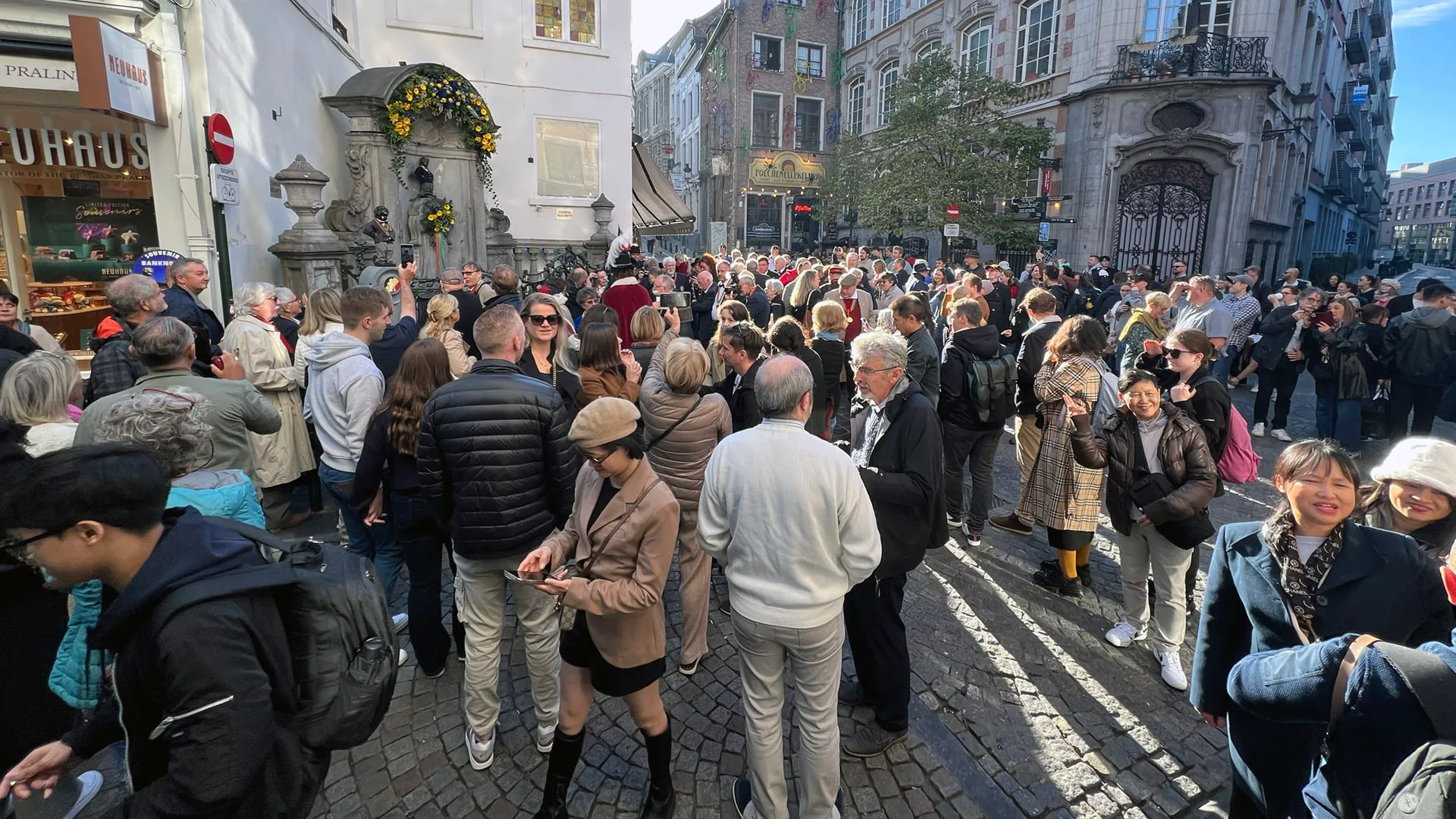
The last time I was in Brussels was late March 2020, just as COVID lockdowns were being introduced. Four years later I returned, wondering how the Brussels chocolate scene has changed.
Prologue

This is my post about my 2020 experiences.
Actually, I was not in Brussels specifically to explore Belgian chocolate. I was there to present at a symposium on chocolate flavor organized by the British Society of Flavourists. (The symposium will be the subject of an upcoming post.)
My itinerary had me arriving in Brussels on Wednesday around 09h00 local time, one day earlier than strictly necessary. But after an overnight flight from Chicago preceded by a lengthy layover after my flight from Phoenix to Chicago – which itself was preceded by a two-hour-plus shuttle experience from Prescott to Phoenix – I figured that having one day to decompress into the time zone (+8 hours) would be a good idea.
I was more than a tad woozy from my flights and I ended up boarding a train I thought would take me from Brussels Airport to Brussell-Noord (North) Station. The train I actually caught was in the direction of Leuven. After changing spoors (platforms) and a short wait in Leuven I made it to North Station, a 12-ish minute walk to my hotel. Totally without realizing it at the time of booking, the hotel I stayed at during my 2020 trip was on the Rogierplein on the other side of the Botanical Garden from my hotel on this trip. A fun coincidence.
I did not know that my route took me through Brussels’ Red Light district. So that discovery was ... unexpected.
I won’t go into any other details about the hotel experience, but after a power nap and cleaning up I headed out to explore the neighborhood – specifically the route from the hotel to the symposium venue – before heading to the Laurent Gerbaud shop on the Rue Ravenstein. Laurent was not in, but I treated myself to a moment (well, over a half-hour) of R&R accompanied by chocolate ...
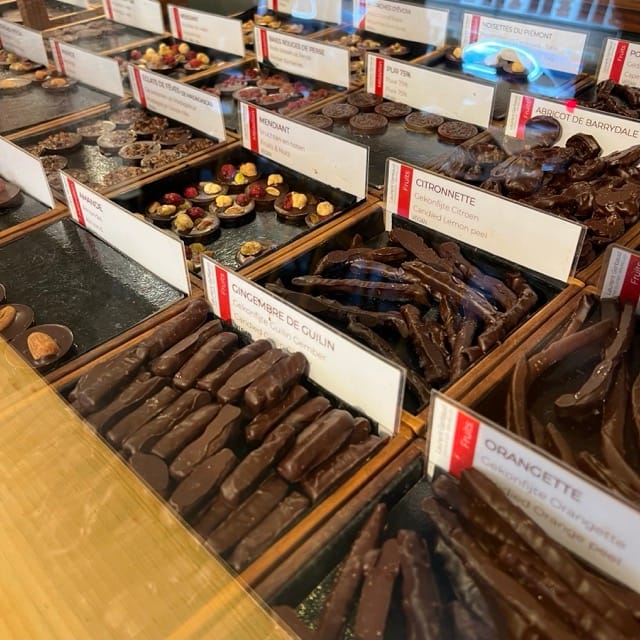
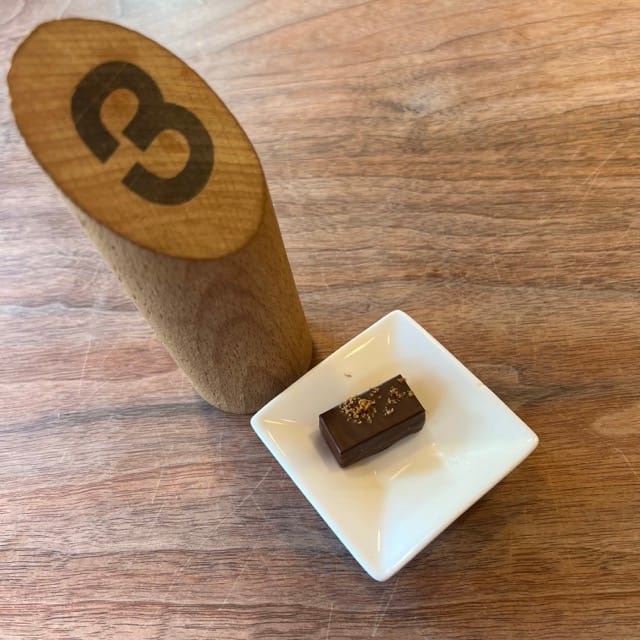
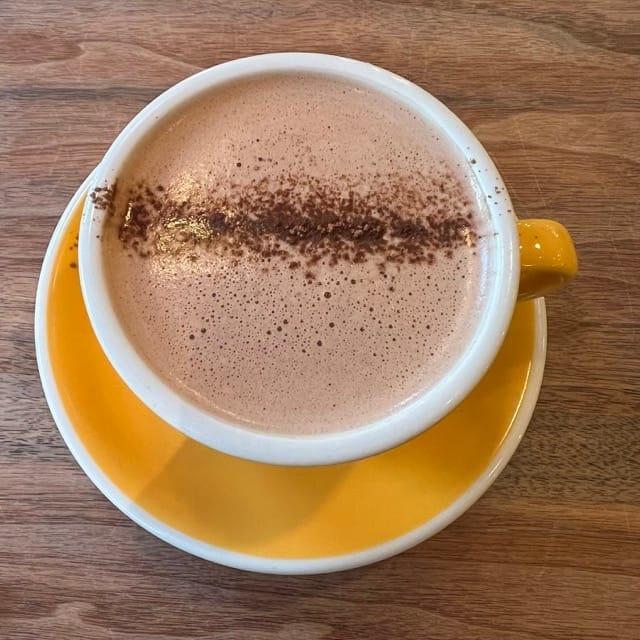
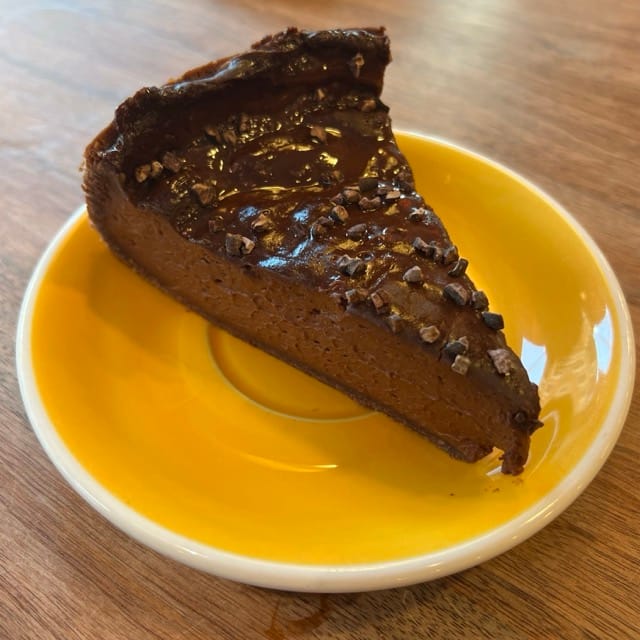
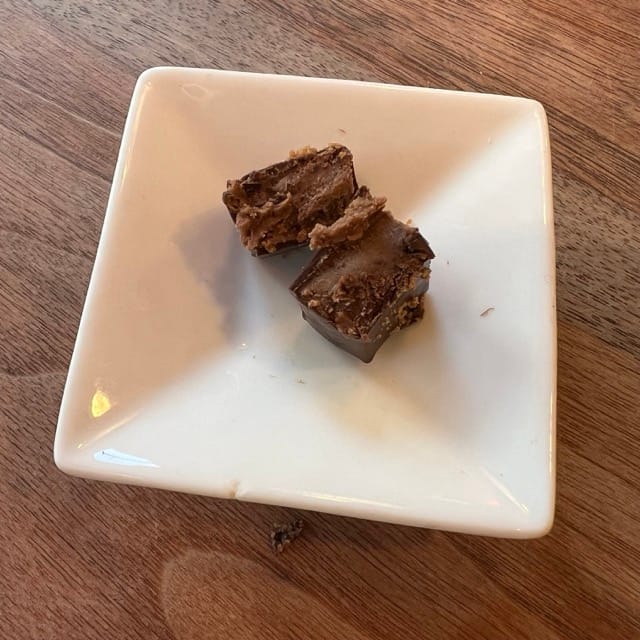
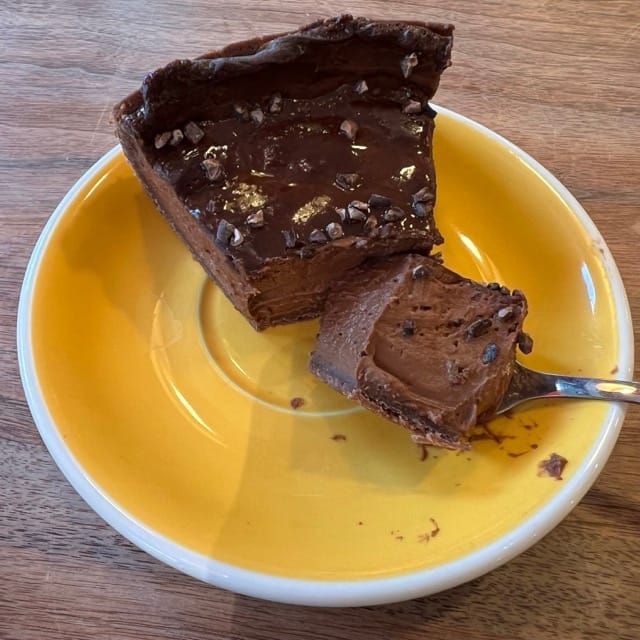
Top L > R: The bonbon case; Waiting for my order to arrive; The hot chocolate presentation. Bottom L > R: The torte of the day (chocolate mousse decorated with toasted cocoa nibs); The inside of the speculoos bonbon given as a lagniappe with every beverage order; An in-progress view of the torte. (Verrrry chocolatey and surprisingly light.)
... before seeking out a place for dinner. I planned to go to Le Gland – a top pizza experience during my 2020 visit – between Gerbaud’s shop and my hotel, but I learned it was permanently closed. As the hotel was in a neighborhood with a high Turkish population, the Turkish pizza-adjacent flatbread called pide was my next choice, accompanied by a salad and a beer; a good way to end my first day.
The next two days (Thursday and Friday) were focused on the symposium and I already mentioned I would cover the symposium in another post.
Exploring “The Belgian Chocolate” Paradox
Because this was my first trip to Belgium in four years (and only my second trip to the EU in that time), I decided to devote Saturday to revisit the route I covered in 2020 – with some additions – to explore what I think of as “The Belgian Chocolate Paradox.”
What is “The Belgian Chocolate Paradox”?
Jean Neuhaus is credited with the invention of the modern praline and ballotin box, but none of the fundamental technological innovations in chocolate was made by Belgians. So why Belgium? What makes “Belgian chocolate” special, unique, and the “best” chocolate in the world? This is a question I have asked for many years.
The paradox is on full display in the proximity of premium up-market brands and very decidedly down-market shops and brands. Right between the Godiva and Mary stores on the Grand Place is a place called La Belgique Gourmand. How does one decide between them? Godiva and Mary are like each other, but La Belgique Gourmand is very different. Which one is best? Are all three “Belgium’s Finest?”
As someone who knows a bit about chocolate, I know that the down-market brands are made with cheap(er) chocolate (with some compound items), lots of sugar, and are priced for the tourist trade (often with buy “n” get one free promotions). Yet, these shops use terms like “gourmet” and “‘fresh’ Belgian chocolates” in their signage, whereas the up-market brands (which include Gerbaud, Elisabeth, Leonidas, Marcolini, et al, in addition to Neuhaus, Godiva, and Mary) are more reserved in their Belgian-centric marketing-speak.
The paradox is – how can both of those worlds be “Belgium’s Finest” chocolate, the Best Chocolate in the World?
The Grand Place vicinity is a great place to start examining the paradox in action, as exemplified by the walk from the Manneken Pis to the Galerie de la Reine off the Grote Markt (reached by walking the Rue de la Colline).
The Manneken Pis
In the featured photo at the top of the post, you can see a Neuhaus store immediately next to the Manneken Pis, which research suggests is one of the top three tourist attractions in Brussels (with the Grand Place being number one).
I was standing in front of the Elisabeth shop when I took the photo of the crowd around the Manneken Pis. Seeing the planks of bark (brisures) in the window I did not take a closer look inside, thinking, because of its proximity to the Manneken Pis, it was a down-market shop.
I learned the next day it was not and returned to purchase some of the pralines in the case (a clue).
As you can see in the right-hand photo in the top row, some of the pieces are showing signs of bloom – so even though an up-market shop, the staff were not on top of properly merchandising what was on offer.
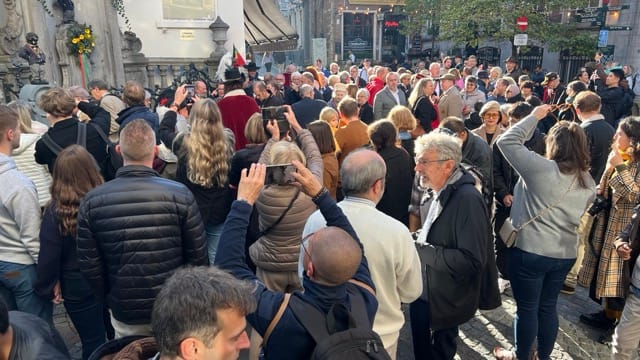
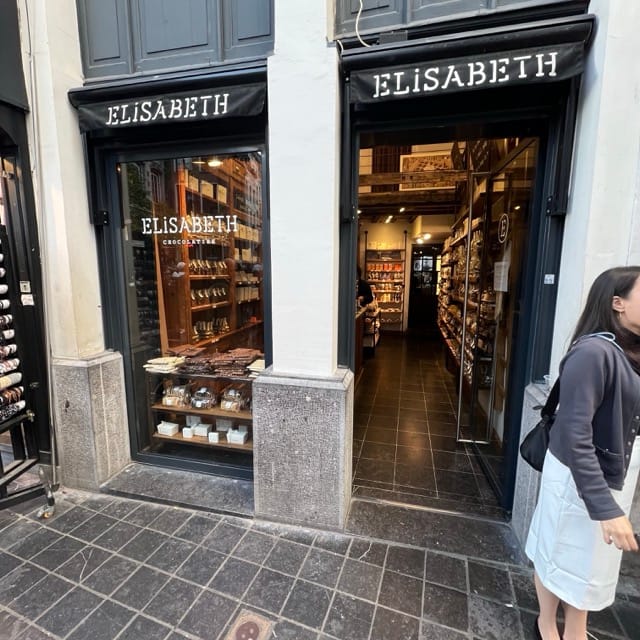
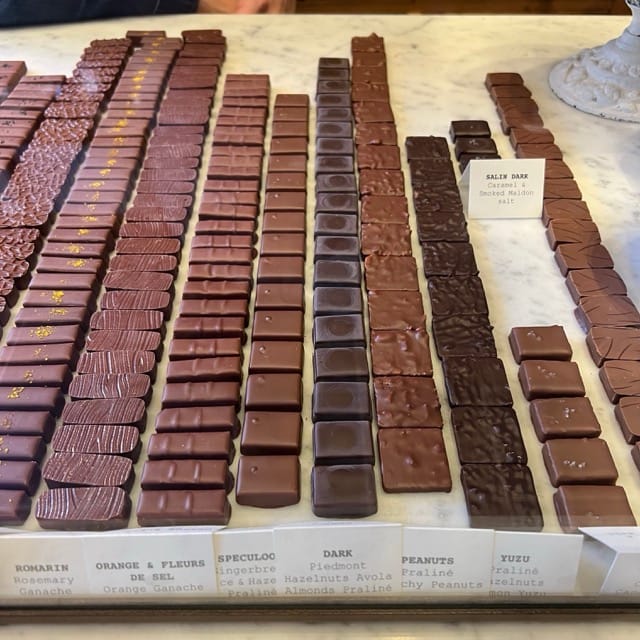
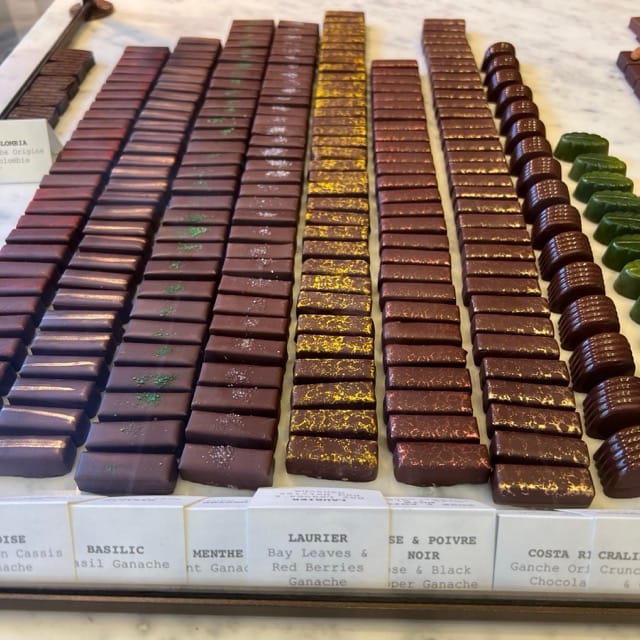
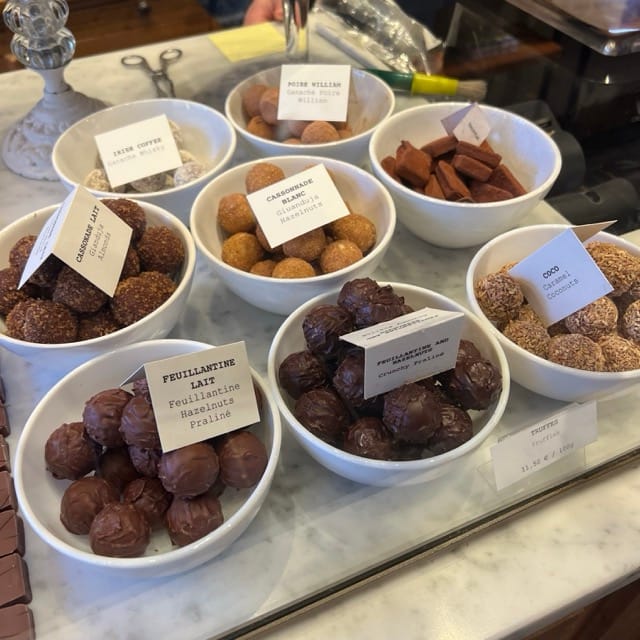
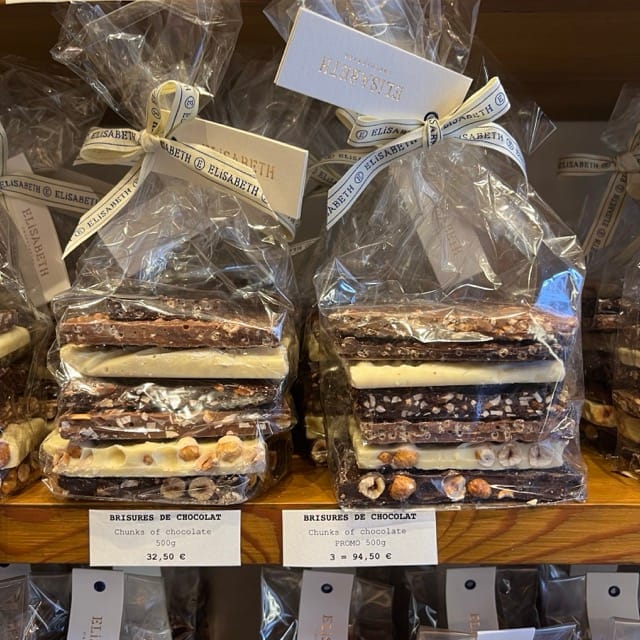
Near the Manneken Pis is Elisabeth. This store produces some of the products they sell but also sells work by at least two other Brussels-based confectioners ... one of whom produces more traditional work (the square pieces) while the other produces more modern flavor combinations (the batons). They offer a wide range of other items as well.
Galerie de la Reine (Part 1)
The Galerie de la Reine is on the other side of the Grand Place from the Manneken Pis. As many as 10,000 people a day traverse this two-block covered shopping street. so having a retail location in the Galerie is a guarantee of a lot of foot traffic, most of them tourists with pocketfuls (pockets full?) of real and virtual €uros they are eager to spend.
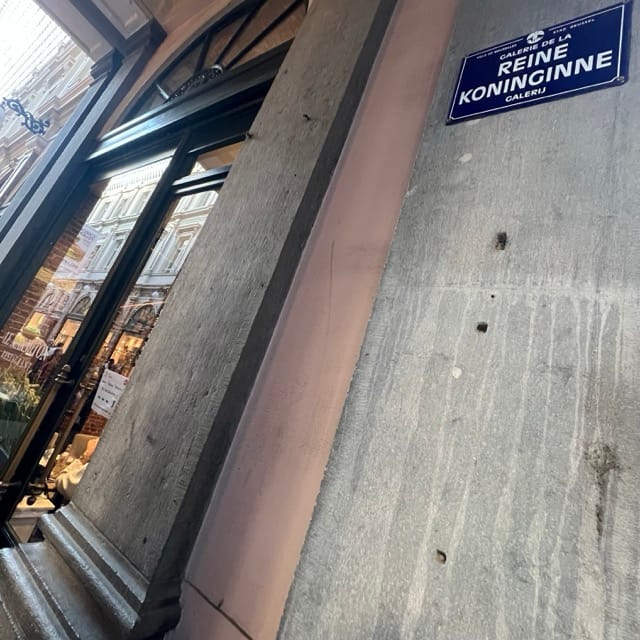
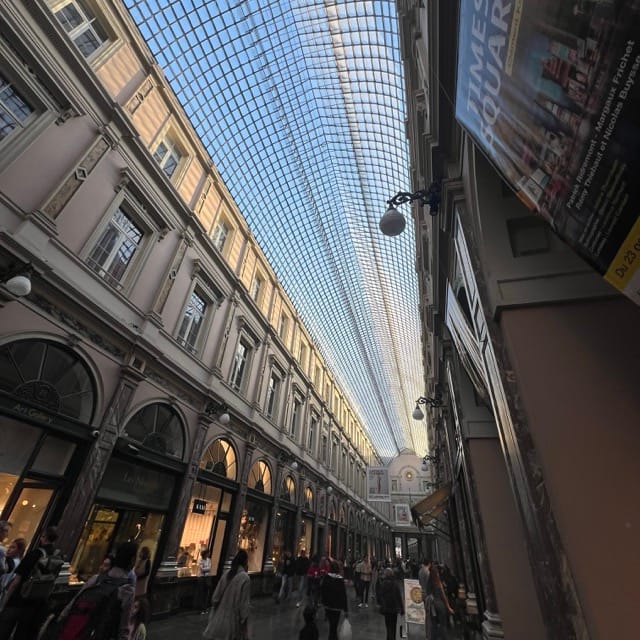
A tourist mecca in Brussels; one entrance is off the Grote Markt.
Galerie de la Reine (Part 2)
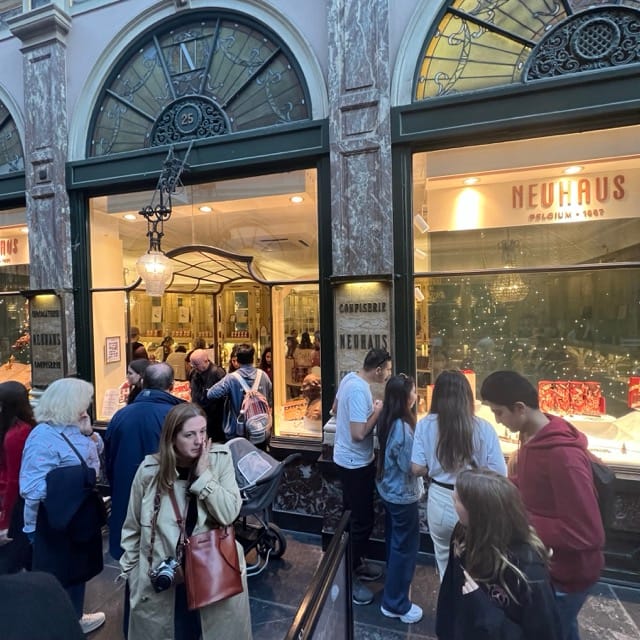
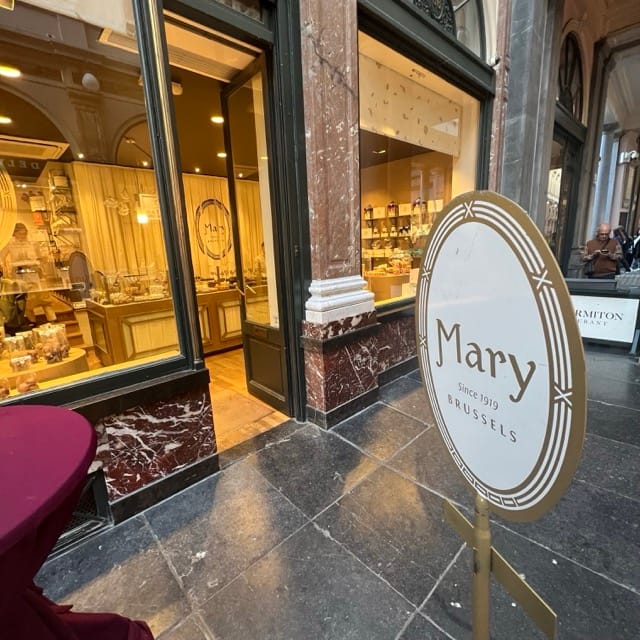
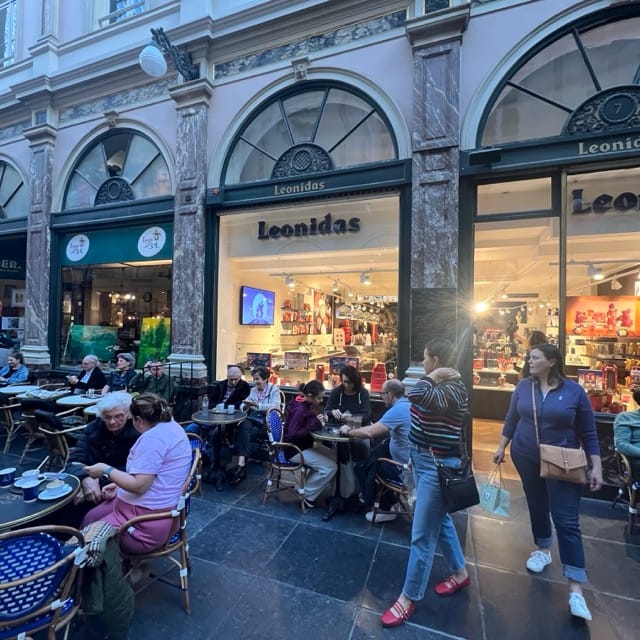
These three shops represent brands that are part of the group that most people think of when they think “Belgium’s Finest.” There are some products in these stores that are not industrially made, but many bear the hallmarks of machine production. There are between two and five shops for each of these brands between the Galerie and the Maneken Pis. Bonus Fun Fact! This is the location of the original Neuhaus shop.
Galerie de la Reine (Part 3)
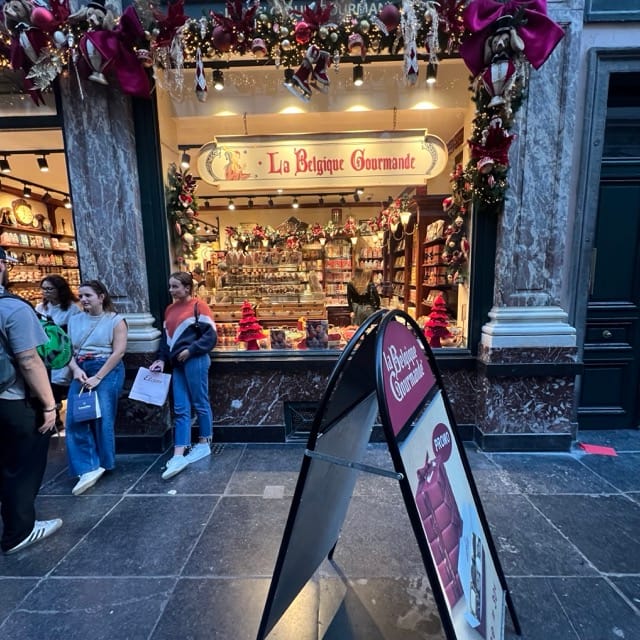
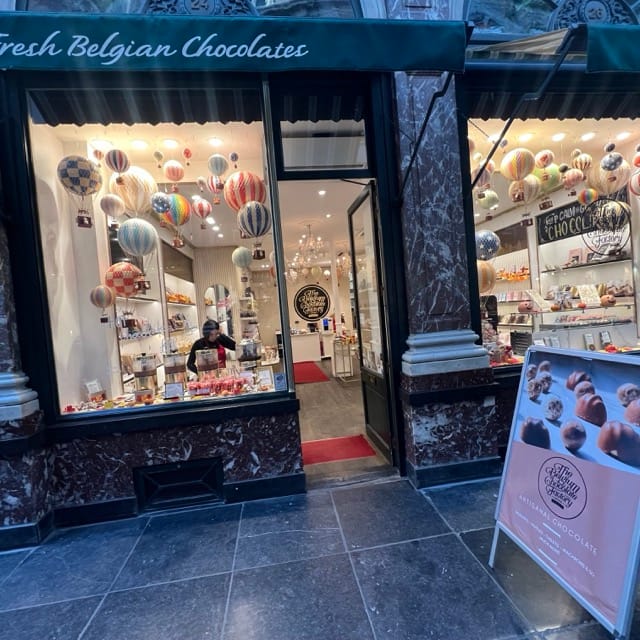
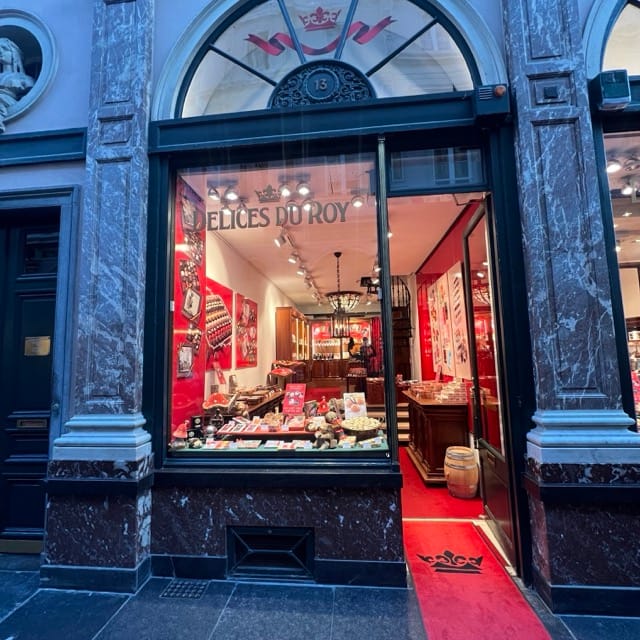
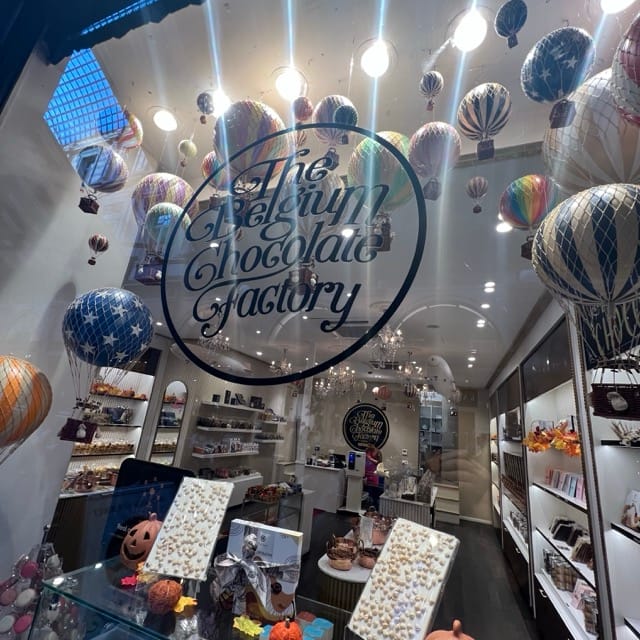
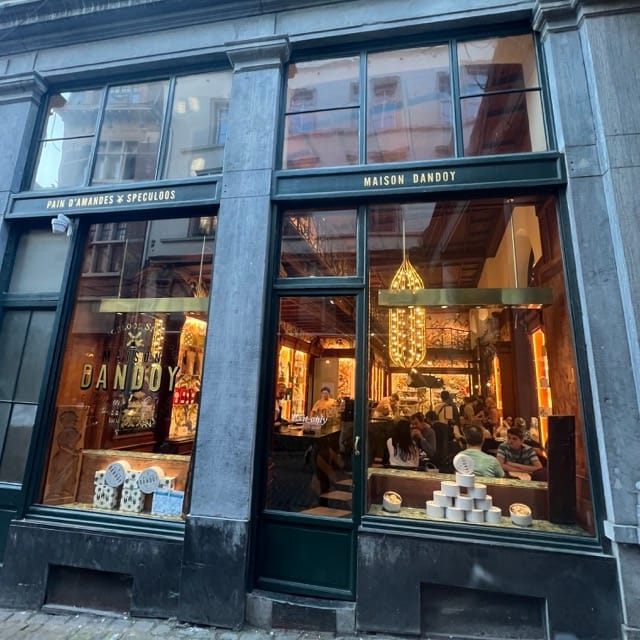
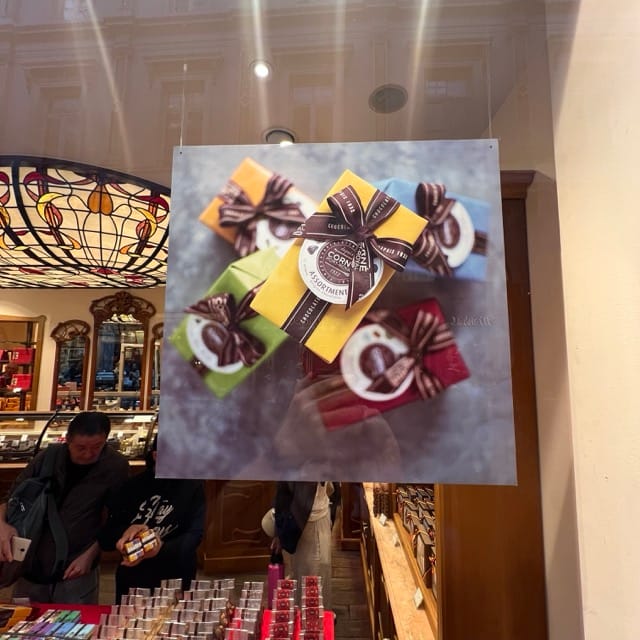
The challenge – especially for tourists – is that the up-market shops are often side-by-side with the shops of down-market brands that more aggressively market themselves as “gourmet Belgian Chocolate.” Furthermore, there are at least five La Belgique Gourmand stores within 200 meters of the one in the Galerie; two are right across from each other on the Rue de la Colline!
Galerie de la Reine (Part 4)
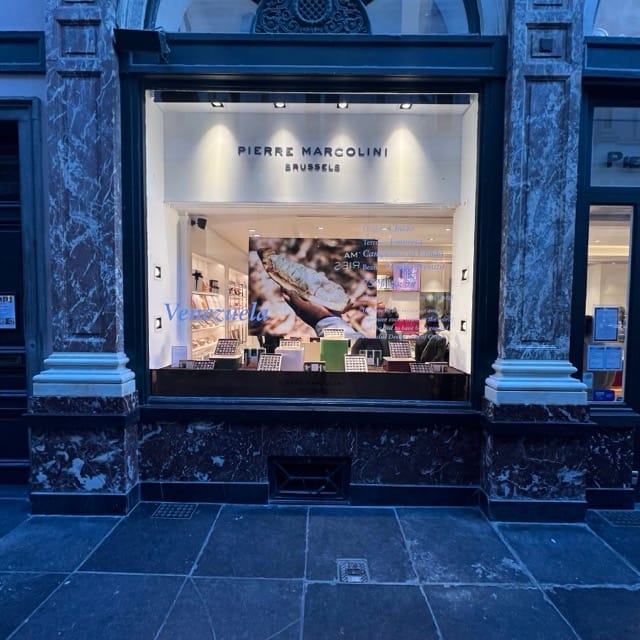
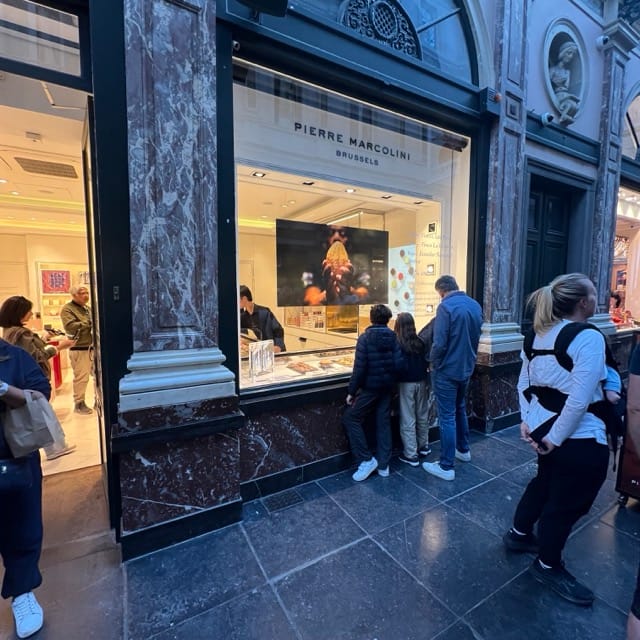
There are two Marcolini shops in the Galerie, about four doors apart. The signage in each emphasizes different aspects of their product line.
En Route from the Manneken Pis to the Place du Grand Sablon
The place in the photos below is labeled on Google Maps as The Belgian Chocolate Makers so I was curious to stop by. From what I can tell, the primary business function is giving classes in praline making to tourists and corporations. There are four storefronts on this corner associated with the business, one of them a retail shop selling own-made chocolate bars, a small selection of confections, and chocolate and coffee beverages.
What struck me about the chocolate bars was the diversity of producing countries – I am showing six of more than ten on display that day. I purchased one – the Soconusco bar – to share with Ewald and Jan-Willem at Heinde & Verre (I made a day trip to visit them in Rotterdam before returning to the US).
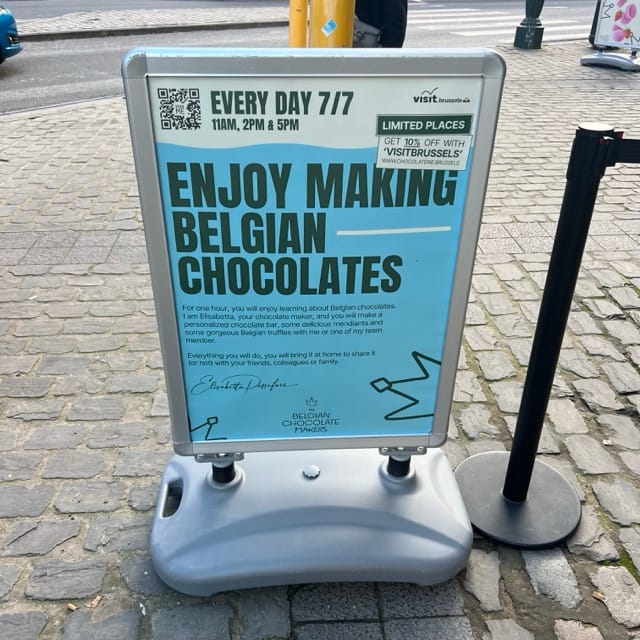
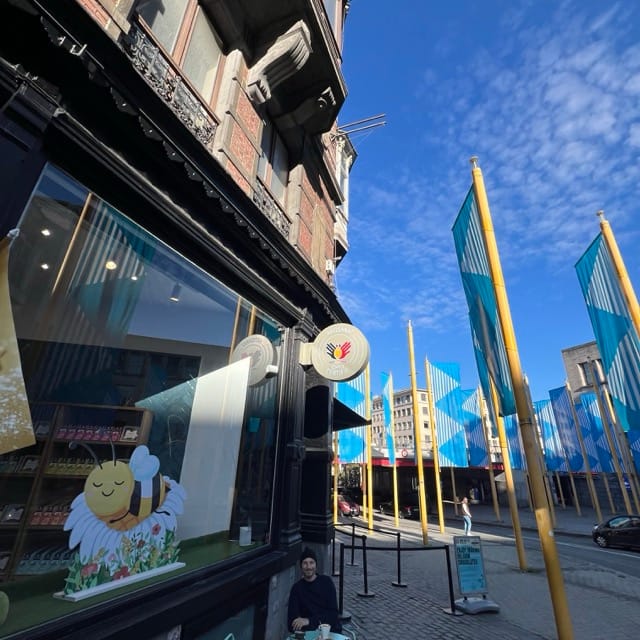
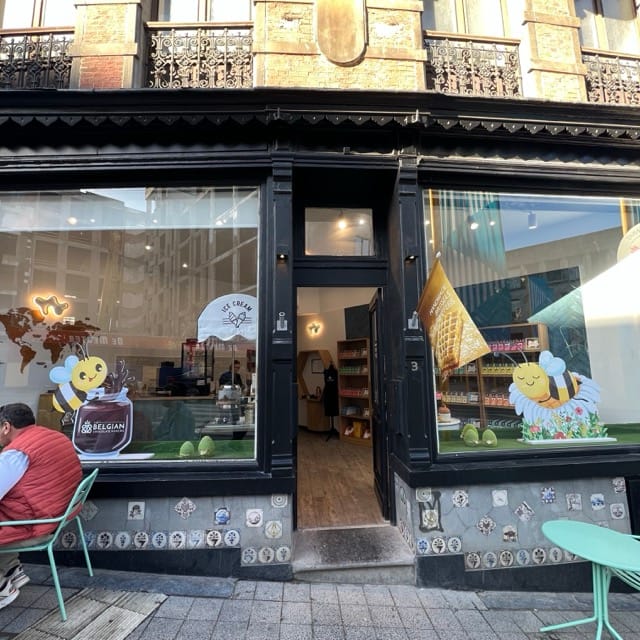
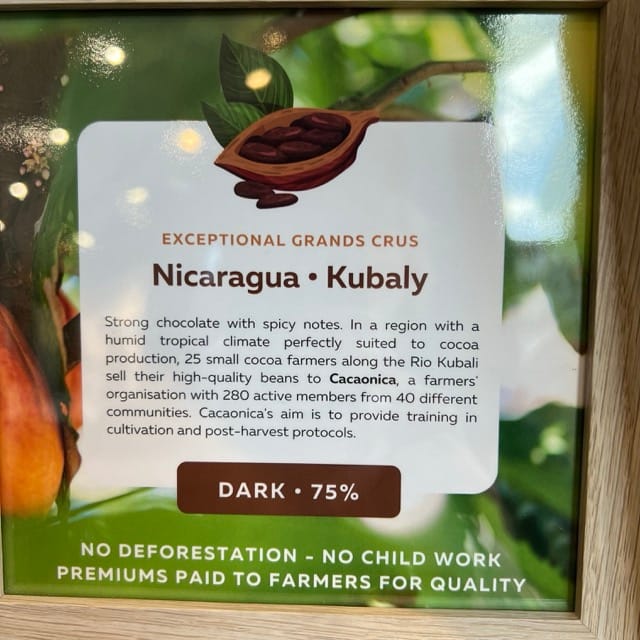
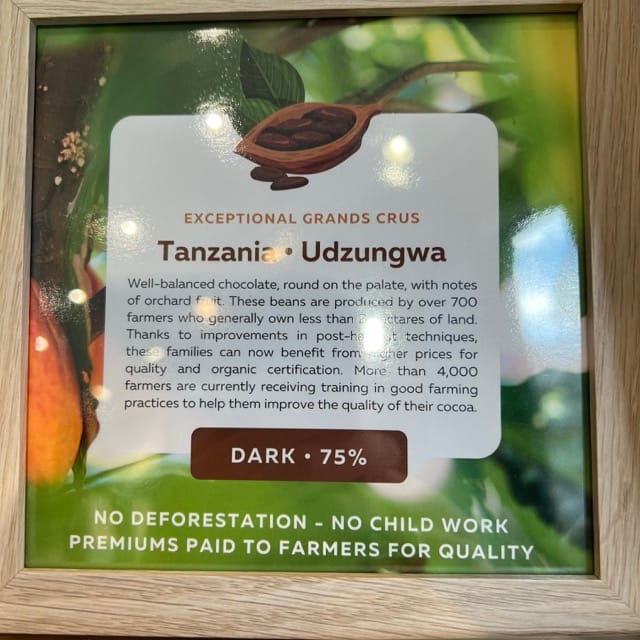
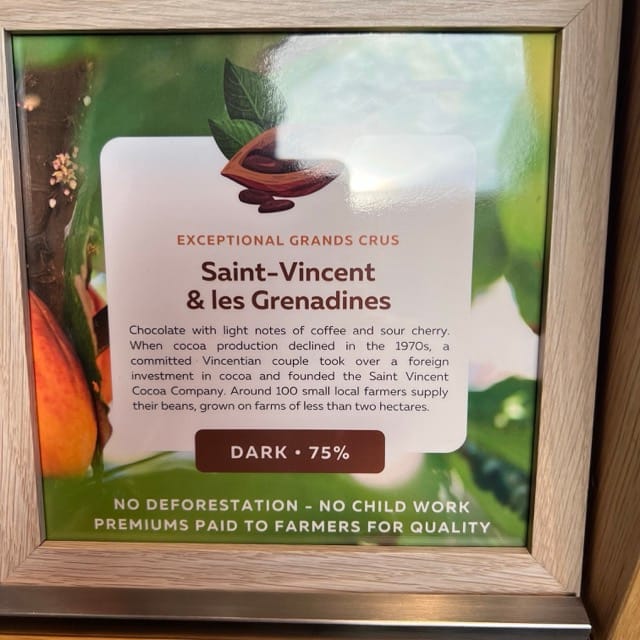
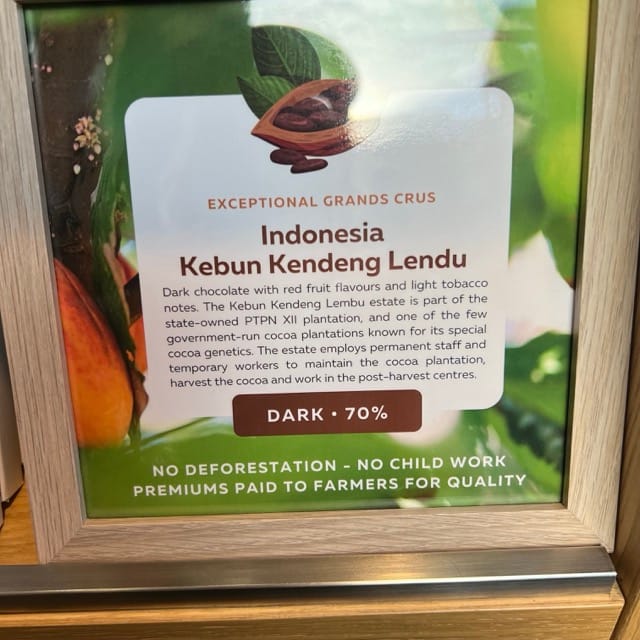
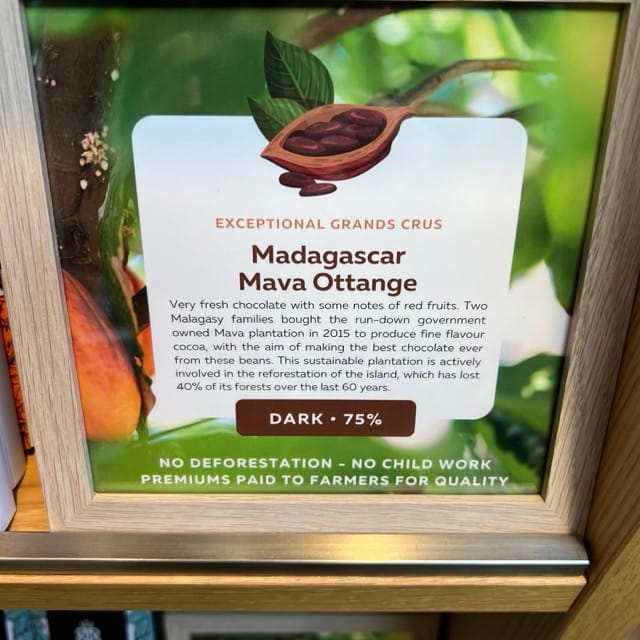
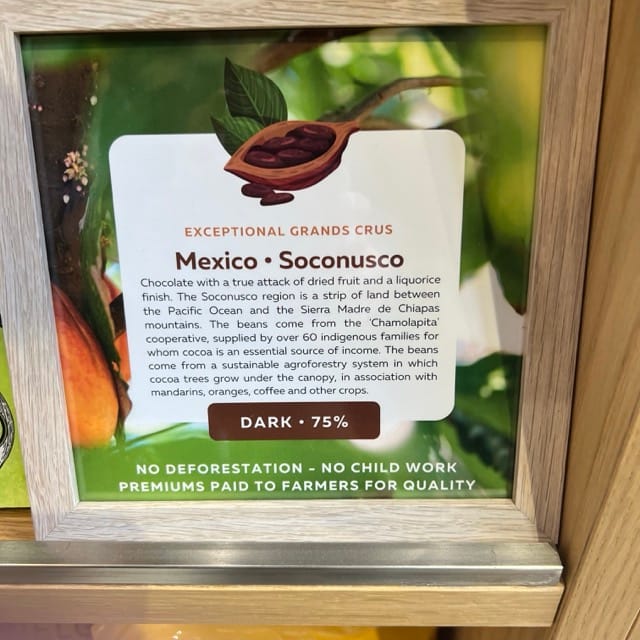
I only tasted one of chocolates on offer and the general impressions were the beans were over-roasted and it was under-refined and improperly conched. This combination leads to simplistic, under-developed flavors ; the potential of the beans used (many interesting soures) is not being realized.
The Place du Grand Sablon
The main reasons to include this location on the tour are a) Wittamer and b) Marcolini’s flagship chocolate store and pastry shop. (In my opinion, and in the opinion of others I have spoken with, Marcolini is a better pastry chef than chocolatier.) Having visited the Marcolini factory in 2012, I know that the pralines are mostly machine-made; they look it in the case. What appears to be new (I was told) is that Marcolini is now manufacturing much if not all of the chocolate he uses, not just the chocolate in the origin bars. (I purchased a Cuba bar and, as with my last experience with the bar, was not impressed.)
There is also a Leonidas location, a chocolate novelty shop, and a shop that may have been there in 2020 but I missed, Passion Chocolate, on the Place.
While Passion Chocolate advertises itself as being handmade – and I could see no obvious indications that was not true – just being handmade does not mean it was good. In a tier-rating system of S to F I would put Passion Chocolate in C-tier. What I tasted was just ordinary. Passion Chocolate is an alternative to the touristy joints but not up to the level many associate with up-market brands.
I mentioned I did not go into the Wittamer shop back in 2020, but this time I did, and the impression I got from looking in the window back then was confirmed; all of the chocolate pieces looked like they came out of a one-shot machine. I did not taste anything as the pieces lacked any visual clue they were in any way special. Nothing called out to me to be tried.
What Did I Learn About The Belgian Chocolate Paradox?
I didn’t gain any real new information to help me answer the question – which I believe will ultimately be found to be brand marketing, mainly of Godiva by the Campbell Soup Company, not something inherent to the chocolate or the confections.
I asked a colleague who is starting an association to address this very issue, “What makes ‘Belgian chocolate’ ‘uniquely Belgian’’? I did not get any answers that satisfied me, no unique criteria for special-ness.
Belgium is known for inventing the modern praline and the ballotin box. There is some dispute about where ganache was invented (France or Switzerland in the 1850s) and it’s likely the word praline is related to praliné, caramelized nut paste, often with chocolate, which was invented in France. While I have heard it said that couverture chocolate was invented in Belgium, some sources point to it first being produced by Van Houten in the Netherlands at least two decades before the Fry family in England is said to be the first to add cocoa butter to chocolate liquor in 1847.
The Belgians do not appear to have invented any chocolate manufacturing technologies. And would that manufacturing technology result in a unique difference, even if its use was limited to companies located in Belgium? Belgian manufacturers use the same types of equipment everyone else does to make chocolate, and they buy beans, sugar, and other ingredients from the same suppliers, though recipes and techniques differ. There is no magical yeast in the air (as there is in San Francisco) that makes Belgian chocolates taste distinctly different from products made elsewhere in Europe – or anywhere.
Is Barry Callebaut, formed by the merger of Callebaut (Belgium) and Cacao Barry (France), but now headquartered in Switzerland, Belgian, even if they operate the largest chocolate factory in the world ... which is located in Belgium?
The Paradox is acutely on display in the tourist centers of Brussels: There are two very different broad “classes” of chocolates everywhere – the down-market industrially-produced tourist-focused brands made with, at best commodity chocolate and at worst with compound, and up-market brands, most of which are known internationally. (As with all generalizations, some brands fall outside these two broad categories and need separate consideration; some fall into the category I call “hometown favorites”.)
The question at the heart of the Paradox is, how can products from La Belgique Gourmand and Neuhaus both be “Belgium’s Finest” when they are nothing alike?
Look for a case where individual pieces are displayed and you can mix-and-match a custom selection.
The shops of the down-market stores do not have cases. Everything is packaged in a box or bag.
The shops of the up-market brands do have cases where you can purchase individual pieces, usually by the kilo. These stores usually also have a selection of packaged items, some of which can only be bought pre-packed.
Postlude
I have more to say about my time in Brussels and Rotterdam that I am going to cover elsewhere – in the November Member Newsletter and in the November 6th episode of PodSaveChocolate.
Fun Facts about Brussels
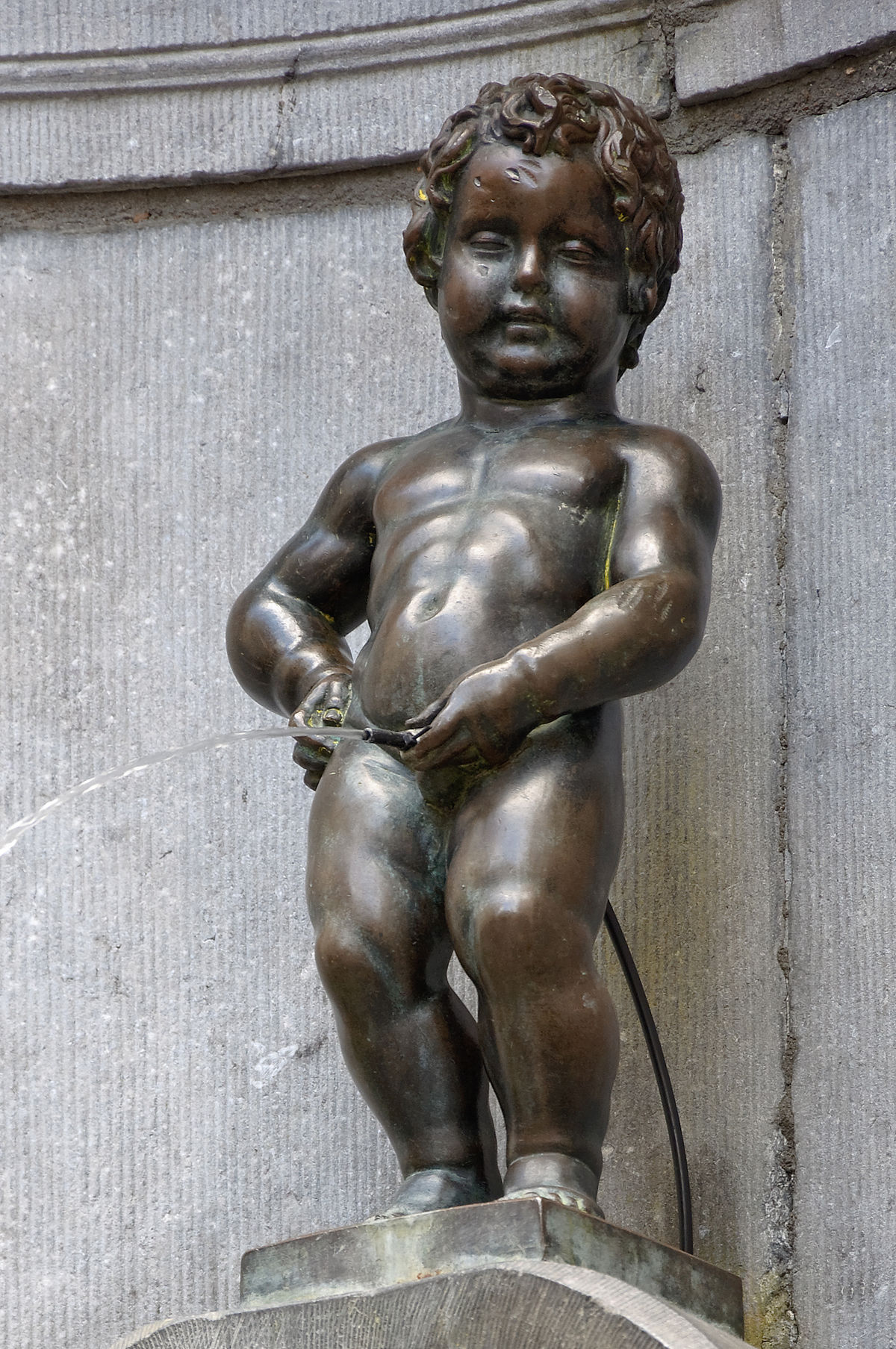
Fun fact: The statue on display is not the original, which has been housed in the Brussels City Museum since 1965.

